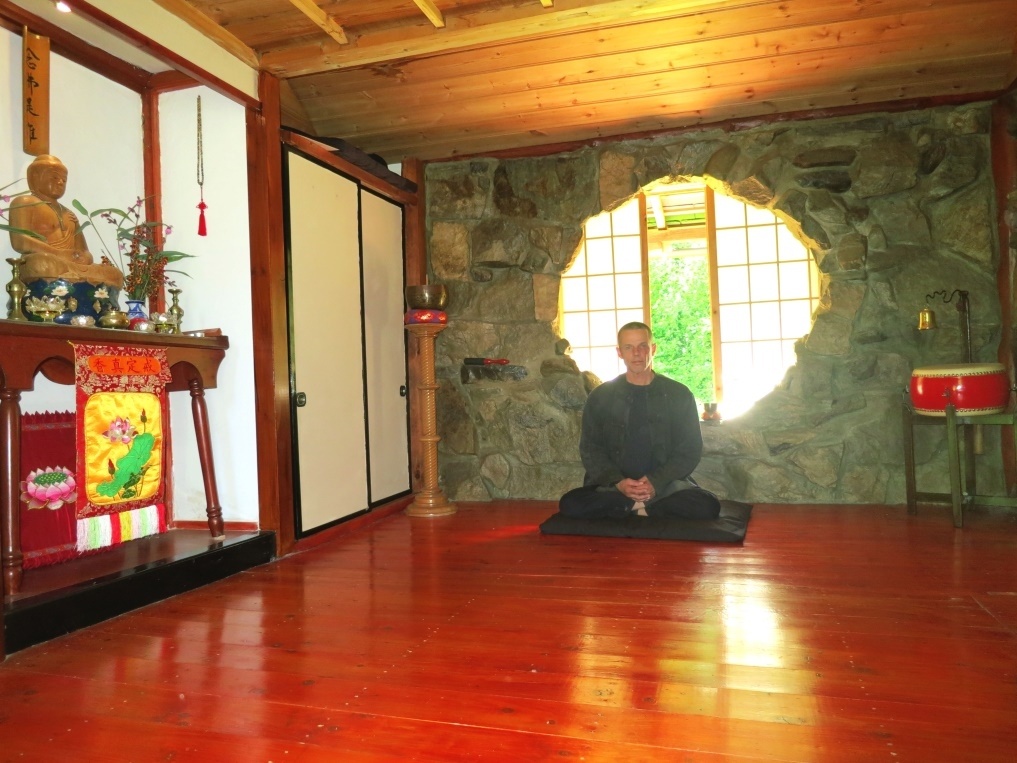
When I was 17, I started taking Karate lessons, which happened to include meditation instruction. At the end of each lesson, we were told simply to sit, to try “not to think,” and to “just be” for a few minutes. This was my first exposure to meditation and I was hooked and intrigued from the start. I asked to be taught more, but was told I should find a Buddhist group to practice with. It was 1972, and at that time in the UK, Buddhism had not yet achieved the popular acceptance and respect it enjoys today, yet I was able to find a group in London where I was taught mindfulness of breathing to great effect.
It was three years later, when I walked into a bookshop and came across the Secrets of Chinese Meditation by Charles Luk, that I discovered Chan Buddhism. Charles was a student of the Chan master Empty Cloud (Xu Yun; 1840–1959), a very well known and respected Chinese monk. The book included a striking photo of Master Empty Cloud and an explanation of the method of Chan meditation known as huatao, or “mind before thought,” which is driven and sustained by an uncertainty about our “original nature” or “true face.” Uncovering and awakening to this is the purpose of Chan.
Soon I had bought all of Charles Luk’s books and studied them closely. I noticed that one was dedicated to Bill Pickard, a student of Charles who also lived in the UK. I arranged to visit Bill and received some good instruction, sitting on retreat with him at his hermitage in Cornwall. This was one of the first Chan (or Zen) Buddhism groups in the UK.
Not long afterwards, I decided to sell my possessions and travel to Hong Kong in search of other students of Master Empty Cloud. There I met Master Sheng Yi and ordained as a monk with him at Precious Wood Monastery on Hong Kong’s Lantau Island, where I remained for a few years before returning to England as a layman.
John Crook, the founder of the Western Chan Fellowship, visited me from the UK while I was in Hong Kong, and after returning home I became a member of his fellowship, passing on some of the teachings I had learned in Hong Kong—especially details about chanting. John also encouraged me to start my own Chan group connected to the fellowship. This I did, undergoing some very high standard teacher training with John.
After Bill Pickard died and left me his robes, I continued to teach independently with my own group. I would ask visitors searching questions, as Bill and John had done with me, the first of which was: “Why have you come here and what are you looking for?” Such gung an, or koans, are one of the most important ways in which I teach.
I bought an area of woodland in Wales to build a small temple. A couple of years later, I built a small wooden hermitage there, well away from the road and surrounded by the sounds of nature, our “original nature.” The building sits comfortably on old railway sleepers and so keeps dry, away from the ground, just like a traditional Japanese building.
From that time, I would invite friends to come and meditate. We would quite often fast (sometimes on brown rice). I moved nearby and started a regular meditation class, also holding retreats there. Visitors often slept in tents in the woodland next to the hermitage.
Over the years, I have noticed that most people seem to arrive when they have come to a crossroads in their lives. They often attend for two or three years then move on when they have resolved whatever is troubling them. I found it necessary to take a long course in counseling so that I could develop the skills to listen to people in a way that is helpful to them. Quite often, people in the UK do not seem very interested in traditional Buddhism, but simply need a quiet space to unwind, to try to find meaning and some peaceful contentment in their lives.
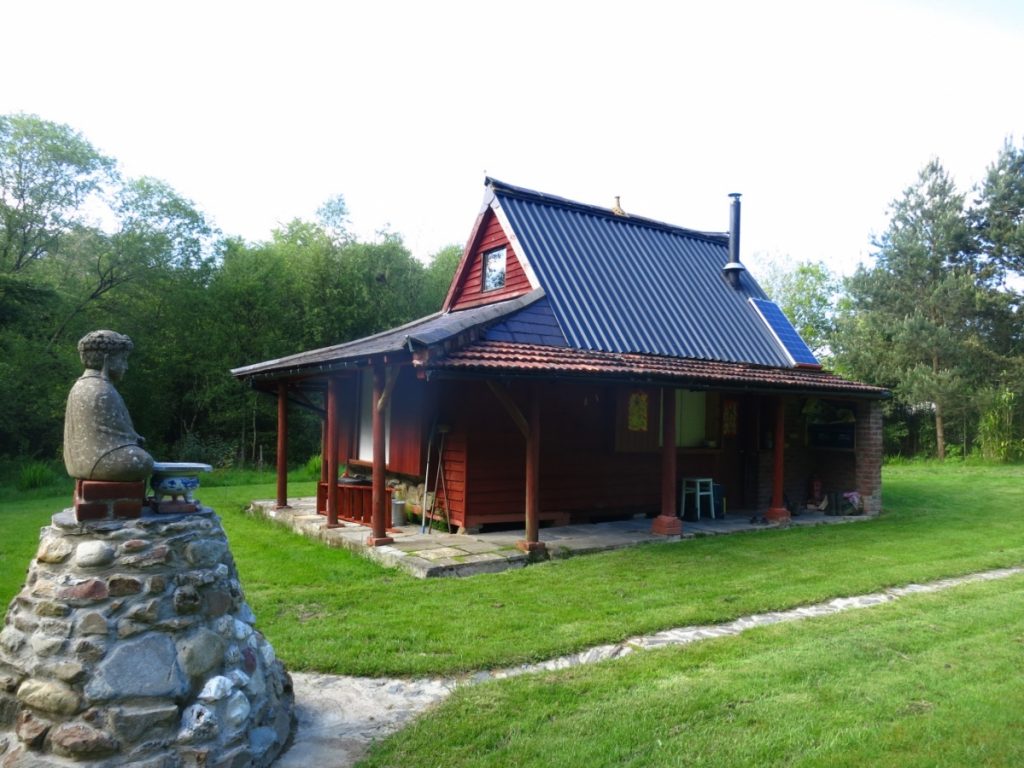
I usually teach the huatao method favored by Master Empty Cloud. I also often recommend breath counting to those suited to it. I use the peaceful nature in the woodland as a teaching aid; we listen deeply in a non-reactive, motionless stillness and walk in meditation around the woods, sometimes in file and sometimes individually. I named the woodland “Precious Wood,” after the temple in Hong Kong.
I began traveling to China every winter, usually staying at Chan monasteries connected with Master Empty Cloud, in an effort to deepen my shallow practice. Back in England, I would lecture and write about my visits, which I found generated a lot of interest. People are keen to know what Chan life is like in the monasteries of China today, and they especially appreciate stories about Master Empty Cloud. I also give public lectures and teachings in China about why I became a Buddhist and what it is like practicing in England.
I have set up a website dedicated to Master Empty Cloud and a Facebook page full of my Chinese photos and diary extracts, which enables me to easily reach out to people all over the world to talk about “mind before thought” meditation and Master Empty Cloud’s amazing 120-year life. I am now working with friends on his Chan poetry. We may already have some instructions that point the way, but the poetry offers hints about how it feels to live in the state of mind called Chan.
I have a simple teaching style and one of the tools I like to use is chanting, although I do not Westernize the chants as this seems to lessen their effect. I chant in Mandarin and use all of the traditional monastic instruments I was taught to use in Hong Kong years earlier, but keep it short and basic. My students often tell me how useful they find this as a preparation for quiet meditation, helping to calm the mind, and I have also found this myself. I also find it very useful to recommend a prostration practice, something often not favored by Westerners. Bill once counseled me that to find out about another’s practice, closely watch them bow and prostrate.
Another important issue is diet. Fasting was recommended by Master Empty Cloud, and was a common practice at Precious Wood Monastery when I lived there. I advise people to keep their diets very clean—vegetarianism is a cornerstone of Chan practice and we always follow it in our school of Buddhism.
I have no plans to start a large group. Preferring to remain in the background, I wait for people to turn up, and they do from time to time. Monks and nuns from around the world have stayed and taught at Precious Wood, most of them from the Chan school of Buddhism. Lay Buddhists also come for solitary retreats.
I have noticed, over the years, that simply copycatting a belief system from a foreign culture is of little value. For Chan to grow and really be useful in the West, it needs to show that it really can change people’s lives in a strong and positive way.
Back to Tradition and Innovation: Chinese Buddhism Beyond Asia Special Issue 2016
References
Luk , Charles (Lu K’uan Yu). 1991. Secrets of Chinese Meditation: Self-Cultivation by Mind Control As Taught in the Ch’An, Mahayana and Taoist Schools in China. Original edition, 1964. Newburyport, MA: Weiser Books.
See more
Empty Cloud: Teaching, poems and stories of the late Buddhist Chinese Chan Master
Eric Johns (Facebook)






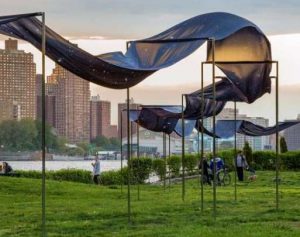
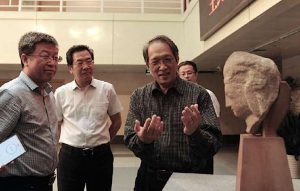


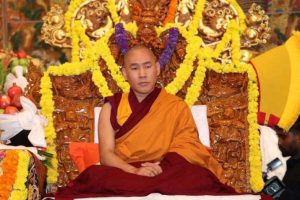

Eric johns
I have read your article and am stirred to travel to wales to visit.
I cannot find much online in terms of contact details nor location etc.
If you read this, I’d be grateful if we could communicate.
Prob best to email: [email protected]
Blessings
Paul Foley